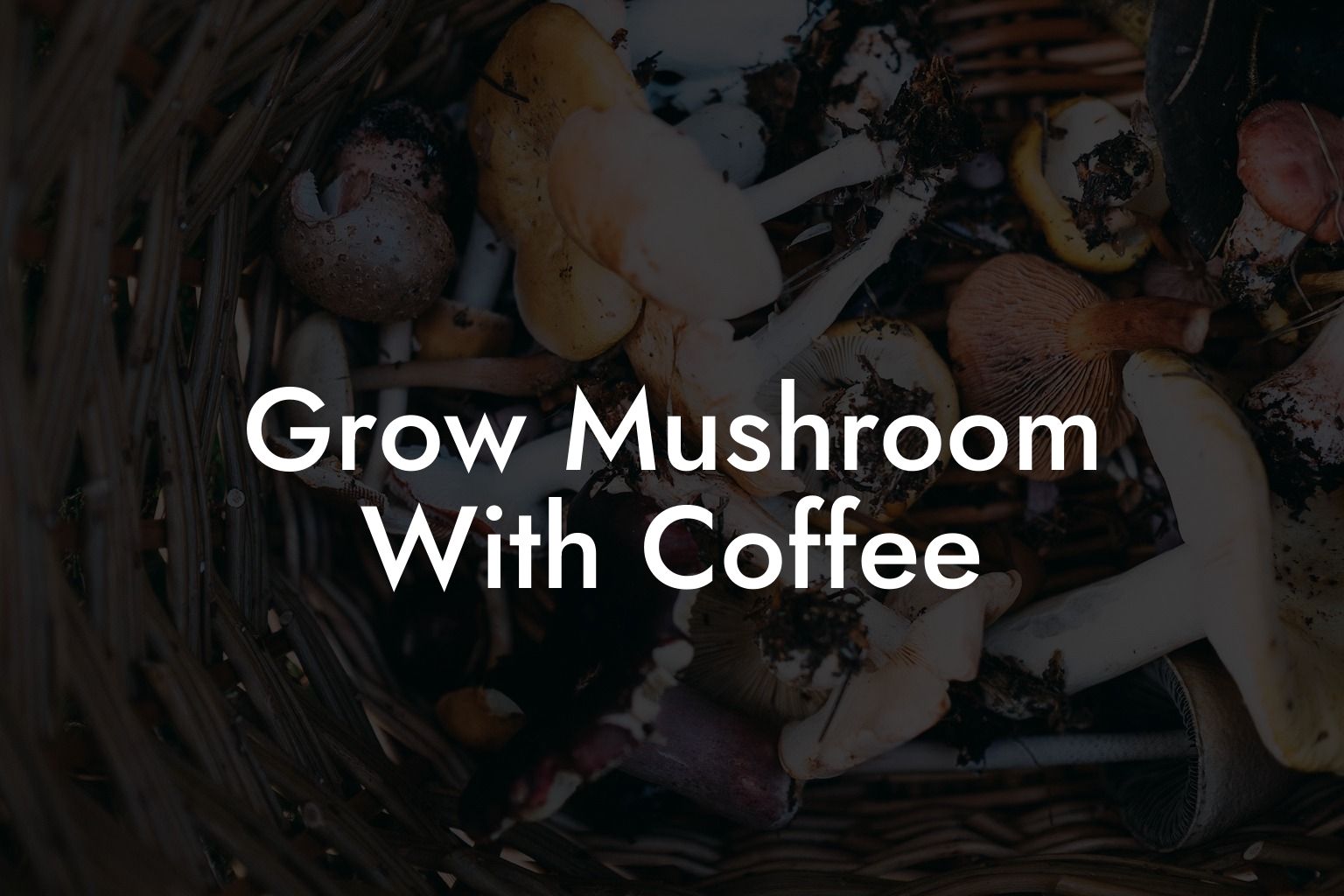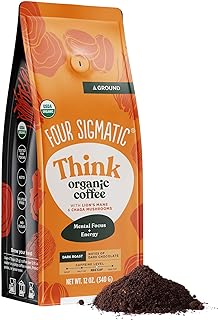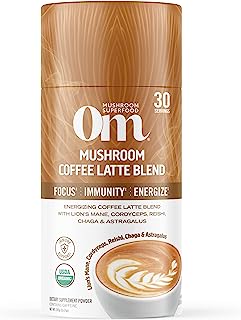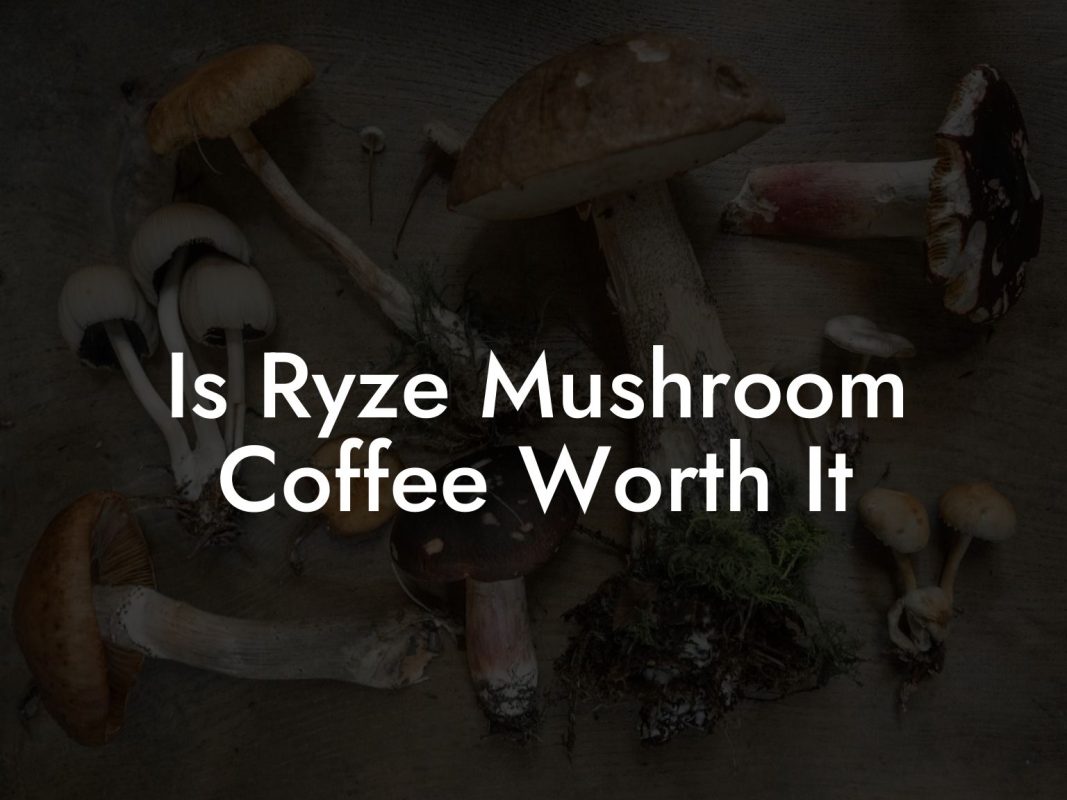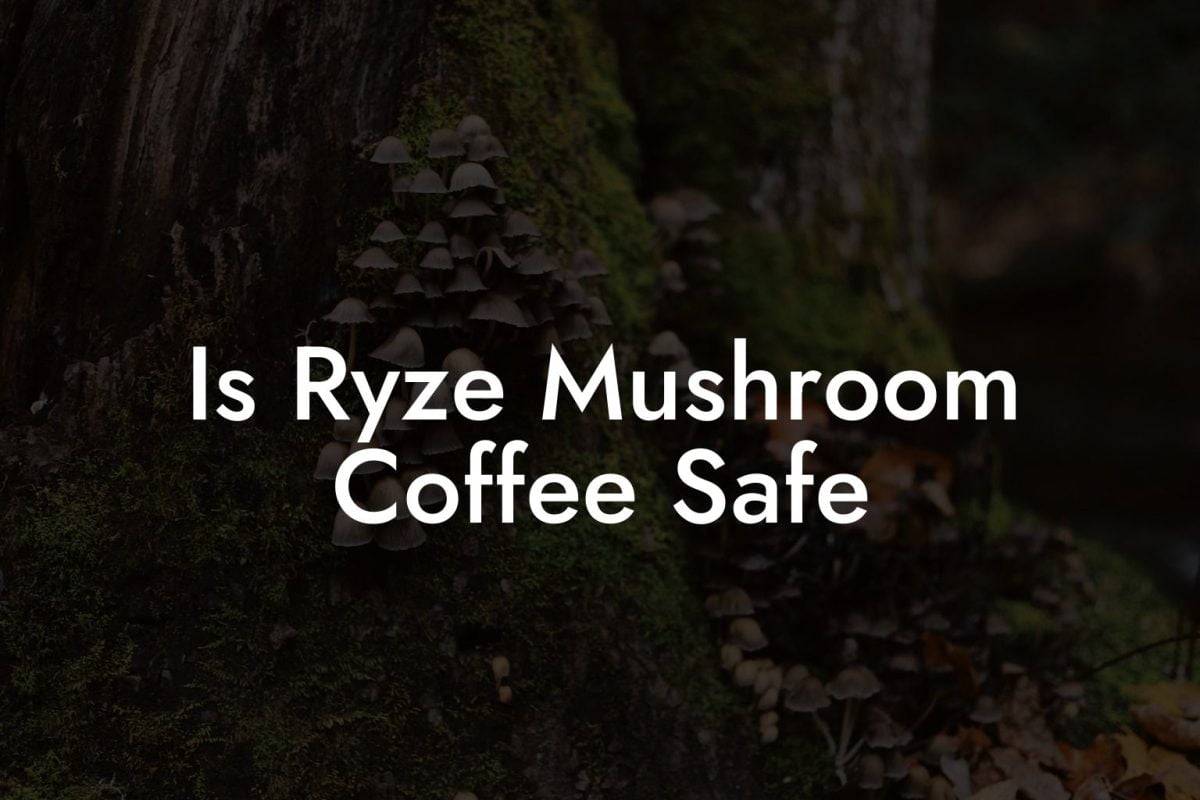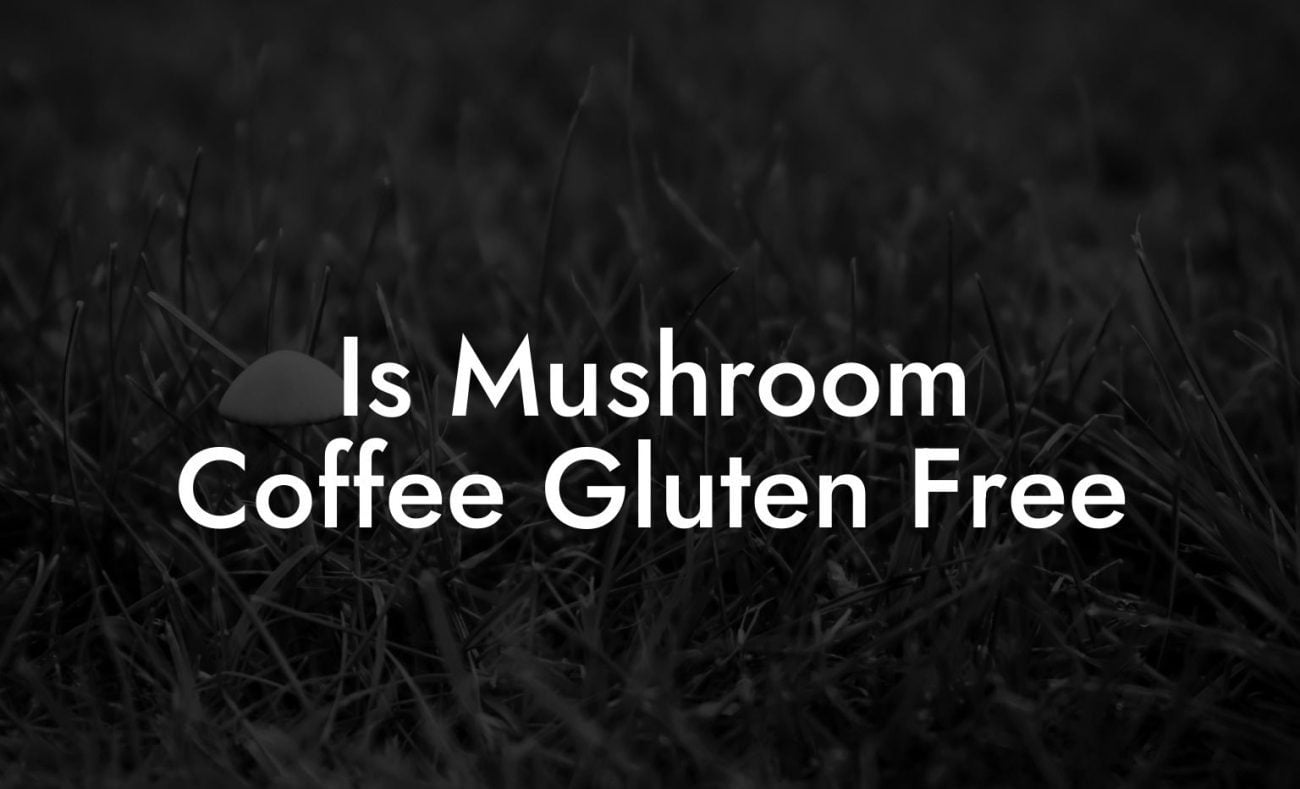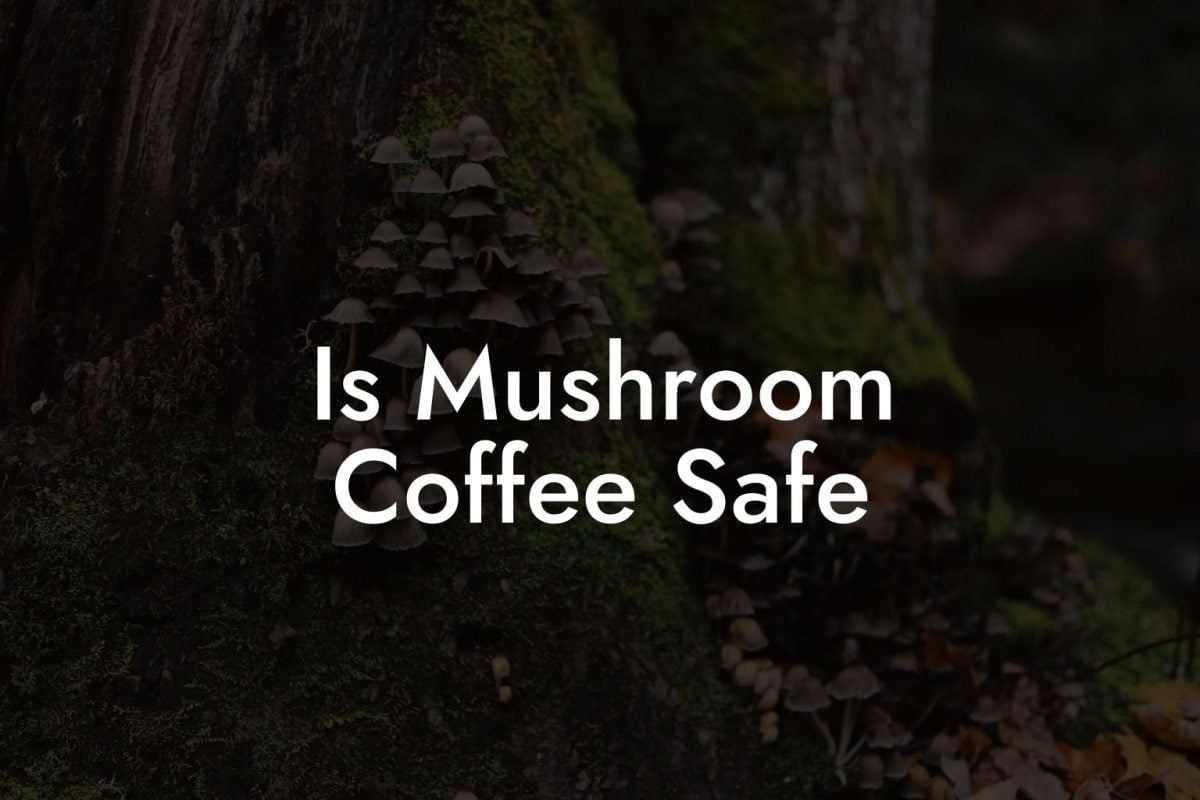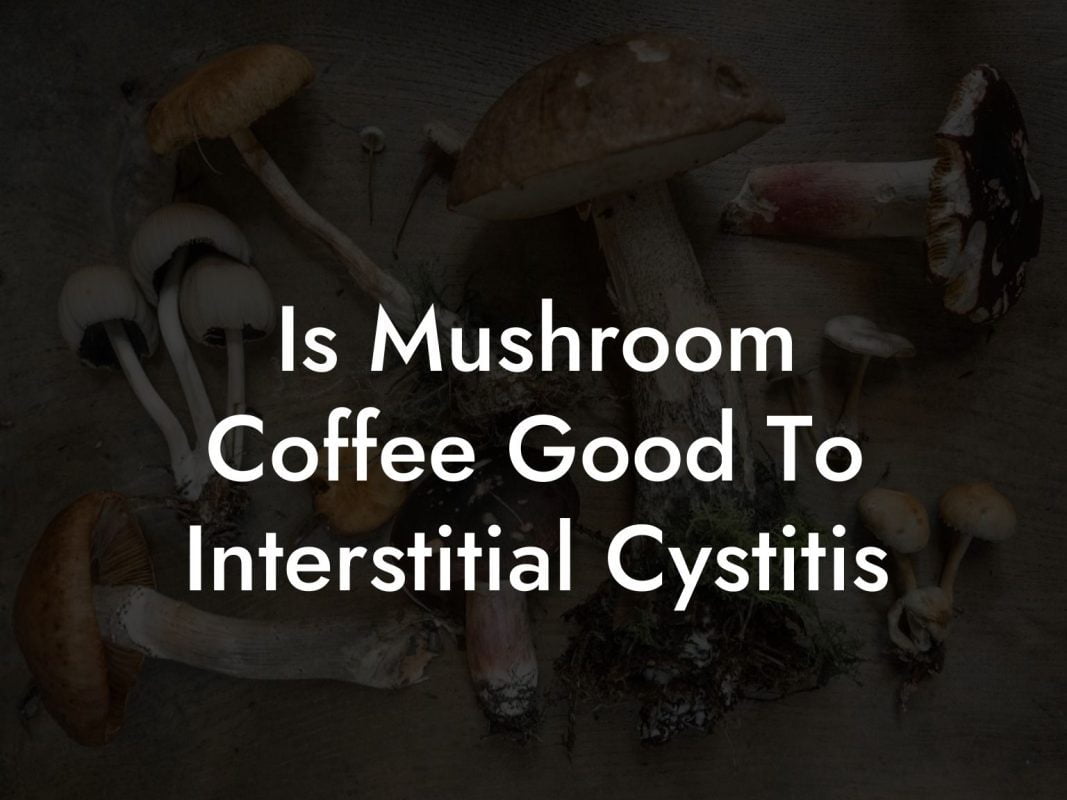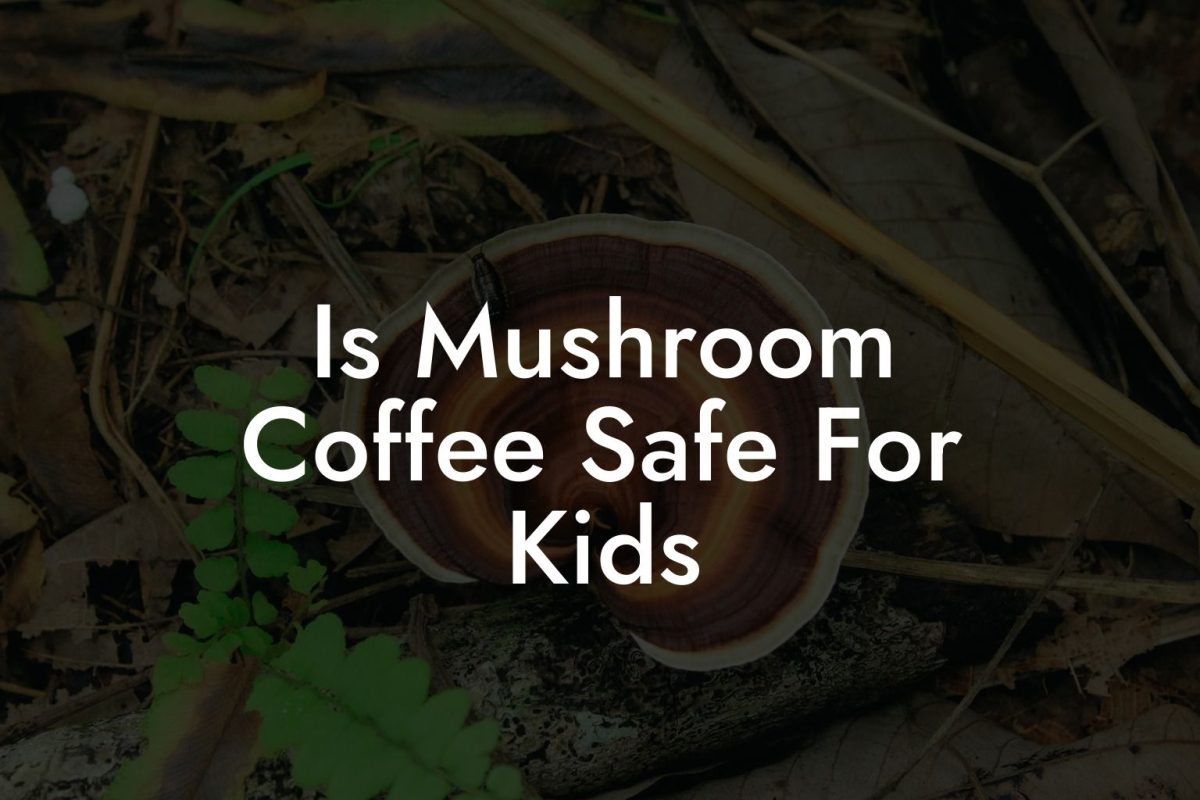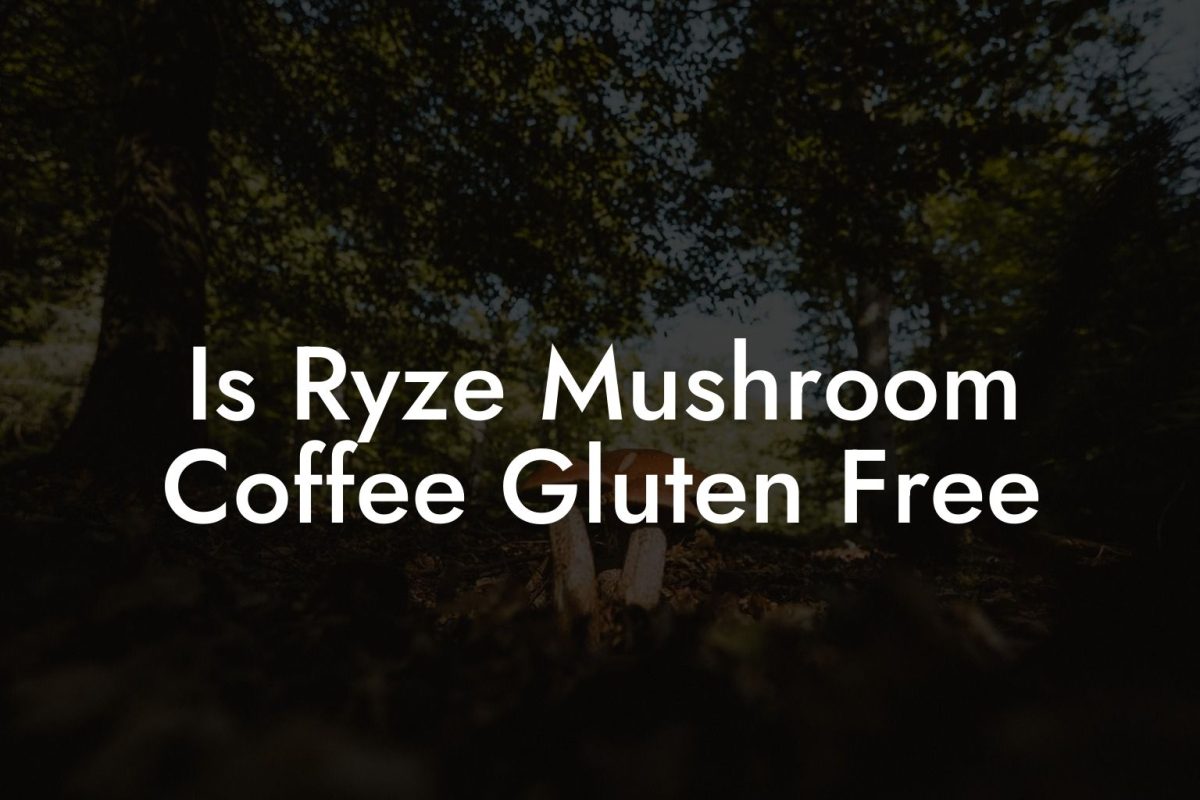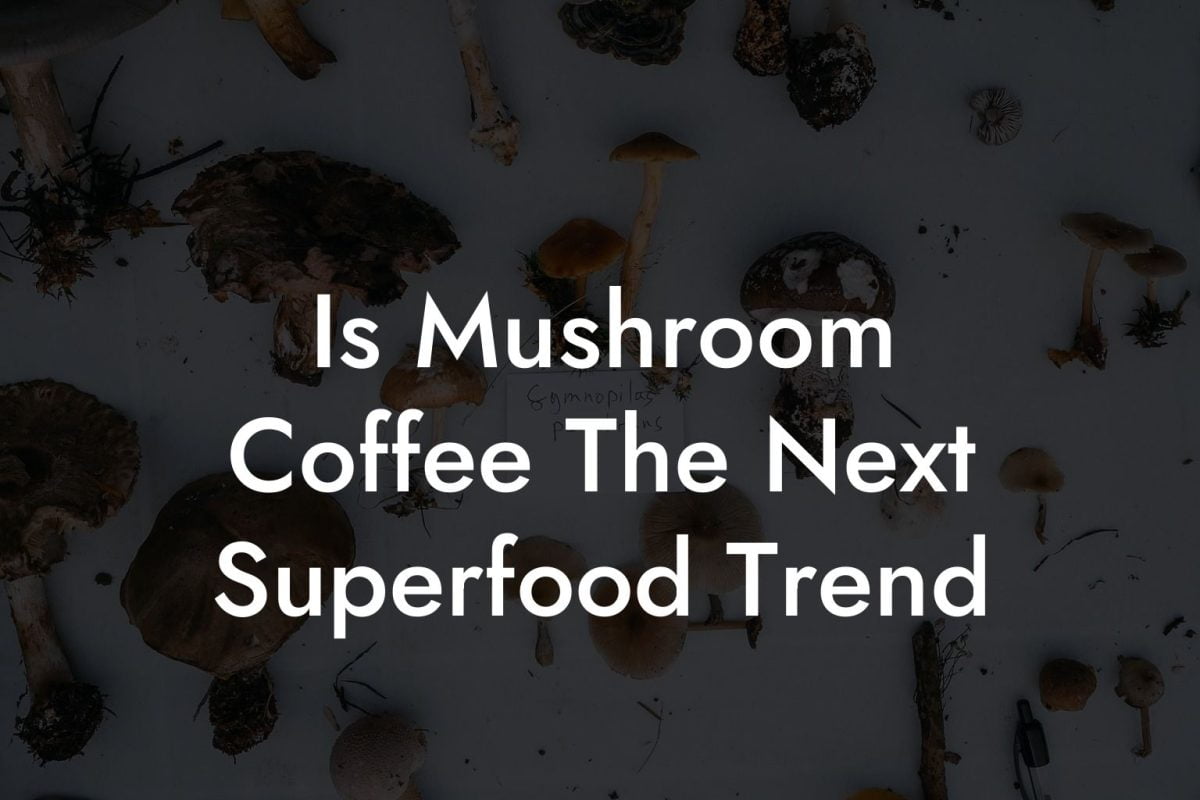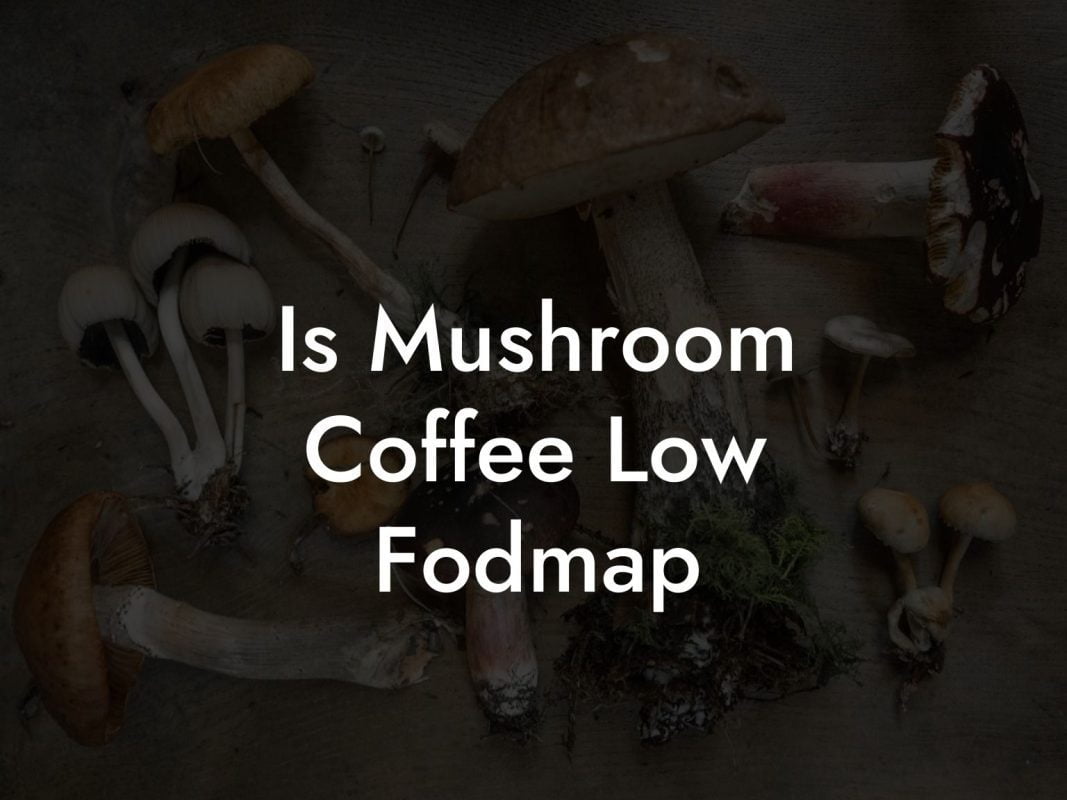Ever thought your morning cup of joe could be transformed into a supercharged ritual of health, sustainability, and next-level flavor? Welcome to the quirky, grounded universe of growing mushroom with coffee, a trend that’s as bold and unconventional as it is deliciously innovative. Imagine blending the earthy energy of medicinal mushrooms with your favorite brewed beverage, creating a fusion that brings together nature’s adaptogens and coffee’s invigorating punch. Buckle up, coffee crusader and mycelium maven, because we’re diving into a journey that’s equal parts science experiment, sustainable lifestyle hack, and culinary adventure.
Quick Links to Useful Sections
- What Is Mushroom Coffee and Why Should You Care?
- The Benefits of Growing Mushrooms With Coffee: An Eco-Friendly Super Hack
- Materials and Methodology: A Step-by-Step Guide to Growing Mushrooms with Coffee
- Gathering Your Materials
- Preparing the Coffee Ground Substrate
- Introducing the Mushroom Spawn
- Fruiting and Harvesting Your Mushrooms
- Mushroom Coffee Varieties and Flavor Profiles: Discovering Your Perfect Brew
- The Rise of Mushroom Coffee Culture: Trends Among Gen-Z and Millennials
- Sustainable Practices: Turning Coffee Waste into Gourmet Growth
- Common Pitfalls and How to Troubleshoot Your Mushroom Coffee Garden
- Moisture Miscalculations
- Contamination Catastrophes
- Temperature Troubles
- Enhancing Your Brew: Creative Recipes and Pairing Tips with Mushroom Coffee
- Mushroom Coffee Latte
- Chilled Mushroom Coffee Frappe
- Mushroom Coffee Smoothie Bowl
- Integrative Techniques: Making Mushroom Coffee Part of Your Daily Ritual
- Resources and Community Support: Your Next Steps in the Mushroom Coffee Movement
- Frequently Asked Questions About Growing Mushrooms With Coffee
- Your Path Forward: Embracing the Mushroom Coffee Revolution
What Is Mushroom Coffee and Why Should You Care?
Mushroom coffee isn’t just another attempt to make your daily caffeine fix more Instagram-worthy, it’s a breakthrough in the world of wellness and sustainability. At its core, mushroom coffee is a blend of traditional coffee beans with powdered medicinal mushrooms like reishi, chaga, lion’s mane, and cordyceps. These fungi have been celebrated for centuries in Eastern medicine, but now, modern science is giving them a spot in your morning ritual.
Combining coffee with mushrooms isn’t about masking the bitter punch of organic compounds; it’s about balancing out the high-octane energy of caffeine with the soothing adaptogens found in mushrooms. This dynamic duo is said to boost focus, enhance immunity, reduce inflammation, and provide a smoother, less jittery energy boost that leaves you ready to diagnose your next viral TikTok dance trend or ace that Zoom call.
Beyond its health-boosting reputation, mushroom coffee is also a call to arms for a more sustainable, waste-free lifestyle. By repurposing spent coffee grounds as a substrate for growing mushrooms, enthusiasts are turning kitchen waste into gourmet treats and potent supplements. So, whether you’re a coffee connoisseur, a health nut, or just someone looking to get a little crafty in the kitchen, mushroom coffee might just be your new obsession.
The Benefits of Growing Mushrooms With Coffee: An Eco-Friendly Super Hack
Why let those aromatic, used coffee grounds go to waste when they can serve as the perfect launching pad for mushroom cultivation? Growing mushrooms with coffee is a brilliant intersection of sustainability, health, and creativity. Let’s break it down:
Looking For The Best Mushroom Coffee? You'll Love These:
- Sustainability and Waste Reduction: Coffee shops and home brewers generate tons of coffee grounds every day. Instead of tossing them into the trash, these nutrient-rich byproducts can be repurposed as a substrate, a kind of organic soil, for mushrooms. This eco-friendly approach helps reduce waste, saves resources, and fosters a circular economy.
- Enhanced Nutritional Profile: The mushrooms grown on coffee substrates absorb some of the coffee’s rich antioxidants, along with their own unique compounds. The result? A beverage or supplement that not only wakes you up but also supports mental clarity, stress reduction, and overall wellness.
- Cost-Effective and Accessible: Growing mushrooms with coffee is a low-cost, DIY project that you can do in your kitchen. All you need are some simple tools, a bit of patience, and a community of like-minded, eco-conscious individuals. It’s a perfect blend of science experiment and everyday practicality.
- A Flavor Revolution: Combining coffee and mushrooms results in a taste sensation that is both earthy and robust. The mushroom flavor can add nuance and depth to your coffee, setting you apart from the mainstream brew.
- Adaptogenic Benefits: Medicinal mushrooms are famous for their adaptogenic properties, which means they help your body adapt to stress. When combined with coffee, these mushrooms can soften the typical caffeine spike, giving you smoother energy without the dreaded crash.
Embracing the practice of growing mushrooms with coffee means you’re not only stepping into a new health-sphere, but you're also championing a more sustainable lifestyle. It’s a win-win for your body, your lifestyle, and the planet.
Materials and Methodology: A Step-by-Step Guide to Growing Mushrooms with Coffee
Ready to roll up your sleeves and get your hands a bit sporey? Developing your very own mushroom coffee isn’t reserved for mad scientists or rural fungi farmers, if you’ve got a little time and curiosity, you’re all set to embark on your own mycelial journey.
Gathering Your Materials
First things first: you need the right tools for this wild experiment. Here’s your shopping list:
- Spent Coffee Grounds: Collect fresh, used coffee grounds from your favorite brew at home or grab a bag from your local coffee shop (with permission, of course!).
- Mushroom Spawn: You can easily order mushroom spawn online. Look for varieties that thrive on organic matter, such as oyster mushrooms or shiitake. For a more adventurous twist, explore medicinal mushroom strains like lion’s mane and chaga.
- Sterile Growing Containers: Use plastic bins, jars, or even repurposed containers that you can sterilize beforehand. The goal is to create a clean environment for your fungi to flourish.
- Additional Substrate Supplements: Depending on your chosen mushroom, you might need a mix of materials such as straw, sawdust, or even coconut coir to enhance the coffee grounds.
- Mister or Spray Bottle: Maintain the right humidity levels by regularly misting your substrate. Mushrooms love moisture, and keeping them damp (but not waterlogged) is key.
- A Hygrometer: This handy tool measures relative humidity, ensuring your growing environment stays within the optimal range for mushroom development.
Preparing the Coffee Ground Substrate
Now that you’ve gathered all your supplies, it’s time to prepare your substrate:
- Collection and Sterilization: Start by collecting fresh coffee grounds. Although they’re naturally acidic, an environment often favorable to mushroom growth, it’s critical to pasteurize them to eliminate unwanted bacteria and competing fungi. You can achieve this by lightly steaming or microwaving the grounds after moistening them (be careful not to cook them dry!).
- Mix with Co-Substrates: For optimal mushroom growth, blend your sterilized coffee grounds with additional substrates like straw or sawdust. This mixture supplies extra nutrients and structure. A common ratio might be 70% coffee grounds to 30% co-substrate, but feel free to experiment based on your mushroom spawn’s requirements.
- Cooling and Preparation: Let the substrate cool down to room temperature. Once it’s past the heat, transfer the mixture to your sterile container.
Introducing the Mushroom Spawn
It’s time for the magical moment when your mushroom spawn meets its new home:
- Inoculation: Sprinkle or mix your mushroom spawn thoroughly into the coffee substrate. Ensure even distribution to encourage uniform growth. The spawn’s spores will colonize the substrate over time, transforming it into a network of mycelium.
- Sealing and Incubation: Once inoculated, seal your container loosely to allow slight airflow while maintaining humidity. Place it in a warm, dark location where temperatures remain steady, ideally between 65°F to 75°F (18°C-24°C). Within a week or two, you should see white, thread-like mycelial growth spreading through the substrate.
- Monitoring and Maintenance: Use your mister and hygrometer to regularly check moisture levels. Too little water and your spawn might dry out; too much water can encourage bacterial growth. Striking the right balance is key to a thriving mushroom culture.
Fruiting and Harvesting Your Mushrooms
With your substrate fully colonized by mycelium, it’s time to coax out fruiting bodies, the actual mushrooms:
- Environmental Adjustments: Expose your growing container to indirect light and increase fresh air exposure. Lower the temperature slightly if possible. These changes signal the mycelium to begin fruiting.
- Wait Patiently, But Not Impatiently! Within days, you should start seeing tiny pinheads, the precursors to full-size mushrooms. This phase can take a couple of weeks, so remain patient and keep the environment stable.
- Harvesting: Once the mushrooms have matured, gently twist and pull them from the substrate. Harvesting too early might result in smaller yields, while waiting too long could lead to over-maturity and decreased flavor.
Following these steps not only helps you grow your own gourmet mushrooms using coffee waste, but it also sets the stage for an inspiring, eco-friendly ritual that bridges the gap between your morning brew and a sustainable future.
Mushroom Coffee Varieties and Flavor Profiles: Discovering Your Perfect Brew
Let’s talk flavor, because mushroom coffee isn’t just about sustainability and health benefits; it’s about the unique, layered taste that only nature can craft. Each mushroom variety offers distinct flavors and benefits, making the selection process as fun as it is informative.
Oyster Mushrooms: Known for their delicate, earthy flavor and velvety texture, oyster mushrooms pair amazingly well with coffee. When grown on coffee grounds, they tend to absorb the rich bean notes, resulting in a harmonious blend that’s both smooth and robust.
Lion’s Mane: A favorite among brain-boosting adaptogens, lion’s mane mushrooms are celebrated for their potential to enhance focus and cognitive clarity. They offer a subtle, seafood-like sweetness that complements the bitterness of classic coffee, making your cup a true multitasker.
Reishi and Chaga: Steeped in eastern traditions, reishi and chaga mushrooms are revered for their immune-boosting and stress-lowering properties. Reishi brings an earthy, slightly bitter flavor, whereas chaga lends a robust, nutty undertone, both transforming your brew into a health tonic worthy of ancient wisdom.
Experimenting with blends between these varieties can yield surprising results. You might find that a mix of lion’s mane for clarity and chaga for depth results in a brew that is the perfect balance of energy and relaxation. The beauty of growing your own mushrooms with coffee is that you have the freedom to tailor the flavor profile to your taste buds, and your health goals.
The Rise of Mushroom Coffee Culture: Trends Among Gen-Z and Millennials
The narrative around coffee is undergoing a radical transformation. Gone are the days when coffee was merely a morning wake-up call. Today, mushroom coffee has carved out its niche as a lifestyle statement among Gen-Z and millennials who crave authenticity, wellness, and environmental responsibility. Social media feeds are awash with vibrant pictures of latte art adorned with adorable mushroom designs, while influencers chant the benefits of adaptogens and sustainable practices.
In a world dominated by fast-paced trends, the mushroom coffee movement stands out as a fusion of old-world herbal wisdom and new-world eco-consciousness. The appeal is multifaceted:
- Health and Wellness: With a focus on holistic health, mushroom coffee offers benefits like enhanced focus, stress relief, and immune support, all vital in our busy, digitally charged lifestyles.
- Sustainability: The waste-not mentality resonates deeply with environmentally conscious consumers. Using spent coffee grounds to grow mushrooms shifts us toward a zero-waste paradigm, proving that our morning cup can indeed save the planet.
- Customization: Gen-Z and millennials love a tailored experience. Mushroom coffee allows for personalization in flavor and function, whether you crave an energizing boost or a moment of mindful relaxation.
By integrating your coffee ritual with mushroom cultivation, you’re not only brewing a cup of liquid energy but also contributing to an innovative, eco-friendly movement that’s reshaping traditional practices one sustainable sip at a time.
Sustainable Practices: Turning Coffee Waste into Gourmet Growth
Sustainability isn’t just a buzzword, it’s a lifestyle, and growing mushrooms with coffee is living proof. Harnessing the potential of spent coffee grounds transforms everyday waste into an opportunity for innovation and ecological impact.
Coffee grounds are packed with nutrients that mushrooms thrive on. Instead of ending up in landfills where they contribute to methane emissions, these grounds can be upcycled to create an organic growing medium. This practice not only reduces waste but also enriches the soil with essential minerals and antioxidants from both the coffee and the fungi.
Embracing this zero-waste cycle is a celebration of creativity and environmental stewardship. By linking the culture of coffee with the cultivation of mushrooms, you become part of a community that redefines how everyday items can have multiple lives, reminding us that every cup of coffee can spark a new chapter in the narrative of sustainability.
Common Pitfalls and How to Troubleshoot Your Mushroom Coffee Garden
Like any creative venture, growing mushrooms with coffee comes with its share of challenges. But don’t sweat it, every great experiment has its bloopers, and each hiccup is an opportunity to learn, improve, and share a laugh with fellow mycology enthusiasts.
Moisture Miscalculations
Finding the perfect level of moisture is key. Too dry, and your mycelium will struggle to colonize the substrate; too wet, and you risk bacterial invasions. Always monitor your humidity levels closely, and adjust your misting routine accordingly. Investing in a reliable hygrometer can be a game changer.
Contamination Catastrophes
Contamination is every DIY cultivator’s worst nightmare. Sterilizing your coffee grounds and working in a clean environment are non-negotiable steps. If you spot any strange colors, odd smells, or fuzzy growths that don’t look like your intended mushroom spawn, it might be time to start afresh. Remember, patience and cleanliness are your best friends.
Temperature Troubles
Mushrooms are finicky about their temperature. An unstable climate can derail your entire cultivation process. Keep your growing area within the ideal range, and consider using a temperature-controlled environment if you’re serious about a consistent yield.
Troubleshooting is part of the journey. Embrace each setback as a learning curve, and know that every misstep brings you one step closer to mastering the art of mushroom coffee cultivation.
Enhancing Your Brew: Creative Recipes and Pairing Tips with Mushroom Coffee
Once you’ve successfully grown your mushrooms and experimented with your mushroom coffee brew, it’s time to get creative in the kitchen. Why settle for a standard cup when you can turn your brew into a work of art? Here are some fun, innovative ideas to elevate your coffee ritual:
Mushroom Coffee Latte
Create an ultra-smooth latte by blending your mushroom-infused coffee with steamed almond or oat milk. Top it off with a sprinkle of cocoa or cinnamon for that extra zing, and savor the layered flavors that reflect both earthy wellness and coffee craftsmanship.
Chilled Mushroom Coffee Frappe
Beat the heat with a refreshing frappe that marries cooled mushroom coffee, ice, and a dash of vanilla extract. Blend until frothy and garnish with a few coffee beans or a light dusting of matcha powder. It’s the perfect post-workout or mid-afternoon pick-me-up.
Mushroom Coffee Smoothie Bowl
For those who enjoy a nutritious breakfast with a twist, try blending mushroom coffee with frozen bananas, a handful of spinach, and your favorite plant-based milk. Top with granola, chia seeds, and berries for a colorful, Instagram-ready bowl that fuels both your body and creativity.
Experiment with different recipes until you find the perfect balance that satisfies your taste buds and health goals. The flexibility of mushroom coffee lends itself to endless creative possibilities, ensuring that every cup is an adventure.
Integrative Techniques: Making Mushroom Coffee Part of Your Daily Ritual
Incorporating mushroom coffee into your daily routine isn’t just about a caffeine fix, it’s about establishing a mindful ritual that nurtures both body and mind. Here are some tips to integrate this unique brew into your lifestyle:
- Morning Mindfulness: Start your day with a quiet moment of reflection as you prepare your mushroom coffee. Savor each step of the process, from brewing to that first, mindful sip. This ritual can set a calm, focused tone for the day ahead.
- Digital Detox Time: Use your coffee break as a screen-free moment to step away from the digital buzz. The meditative process of brewing and enjoying your mushroom coffee can help you recharge mentally and physically.
- Sustainable Affirmation: Every time you brew your mushroom coffee, take a moment to appreciate your role in reducing waste and supporting sustainability. This small act creates a positive feedback loop in your day, fueling both your body and conscience.
- Creative Collaboration: Invite fellow coffee enthusiasts, eco-warriors, or creative souls to join your mushroom coffee experiments. Whether it’s sharing recipes, troubleshooting growth challenges, or simply swapping sustainable living tips, community collaboration amplifies the joy of the process.
By weaving mushroom coffee into your daily routine, you transform a simple beverage into a holistic experience that harmonizes productivity, mindfulness, and environmental stewardship.
Resources and Community Support: Your Next Steps in the Mushroom Coffee Movement
Diving into the realm of growing mushrooms with coffee can feel a bit overwhelming at first, but you’re not alone in this journey. There’s a vibrant, ever-growing community of enthusiasts ready to share their wins, losses, tips, and tricks. Whether you’re a seasoned cultivator or an absolute beginner, the resources available online are as diverse as the mushroom strains you might grow.
Online Forums and Social Media Groups: Join dedicated communities on Reddit, Facebook, or specialized forums that focus on DIY mushroom cultivation and sustainability hacks. Sharing your experiences and learning from others can be both inspiring and educational.
Tutorials and Workshops: Look for online video tutorials, local workshops, or even virtual classes that provide step-by-step guidance on making the most out of your coffee grounds, inoculation methods, and troubleshooting techniques.
Eco-Friendly Retailers: Many online shops focus on sustainable living products, from mushroom spawn to eco-friendly growing kits. Finding quality supplies can make your mushroom coffee journey a breeze while supporting businesses with green values.
Innovative Blogs and Recipe Sites: Explore blogs and websites that focus on mushroom coffee recipes, innovative brewing techniques, and creative ways to use your harvest. The intersection of health, culinary art, and sustainability is a treasure trove of inspiration.
No matter where you are on your journey, remember that every step you take not only expands your own knowledge and skill set but also contributes to a larger movement toward sustainable living and mindful consumption.
Frequently Asked Questions About Growing Mushrooms With Coffee
We know you probably have a lot of burning questions about the mushroom coffee revolution. Here are some of the most frequently asked questions to help you navigate this exciting and eco-friendly endeavor:
1. What exactly is mushroom coffee?
Mushroom coffee is a blend of traditional coffee beans with powdered medicinal mushrooms such as reishi, chaga, lion’s mane, or oyster mushrooms. This fusion aims to enhance health benefits by combining coffee’s energizing qualities with the adaptogenic and immune-supporting properties of mushrooms.
2. Can I really grow mushrooms using spent coffee grounds?
Absolutely! Spent coffee grounds are nutrient-rich and serve as an excellent substrate for many mushroom varieties. With proper sterilization, moisture control, and the right complementary substrates like straw or sawdust, you can successfully cultivate mushrooms in your own kitchen.
3. What are the health benefits of mushroom coffee?
Mushroom coffee is celebrated for offering a balanced energy boost without the jitters of regular coffee. The medicinal mushrooms used in the brew contribute adaptogenic benefits, improved focus, reduced stress, and immune support, making your cup a holistic health ritual.
4. Is growing mushrooms with coffee a sustainable practice?
Yes, repurposing used coffee grounds minimizes waste and reduces your environmental footprint. It’s a creative, eco-friendly method that supports a circular economy while transforming kitchen waste into a valuable resource.
5. How long does it take for mushrooms to grow using this method?
After inoculation, the mycelium typically colonizes the substrate in one to two weeks. Once fully colonized, fruiting can occur within another week or two, though this timeline may vary depending on factors like temperature, humidity, and mushroom species.
6. Do I need to be an expert to start growing mushrooms with coffee?
Not at all! Growing mushrooms with coffee is a fun, accessible project that beginners can easily adopt. With a little research, proper hygiene, and the help of online communities, you’ll quickly pick up the skills needed for success.
7. Can I use any type of coffee for mushroom cultivation?
While most coffee grounds work well due to their nutrient-rich nature, fresh, organic coffee grounds tend to yield better results because they’re free from chemical residues. Experiment with different coffee types to see which one aligns best with your chosen mushroom variety.
8. Is there any risk of contamination when using coffee grounds?
As with all mushroom cultivation projects, contamination is a risk if proper sterilization and cleanliness protocols aren’t followed. Always pasteurize your coffee grounds and work in a clean environment to safeguard your growing medium.
9. Can I reuse the substrate after harvesting the mushrooms?
In some cases, the substrate can produce a second flush of mushrooms. However, the nutrient density will gradually decline, so you might eventually need to refresh the substrate for consistent yields.
10. Where can I find quality mushroom spawn and supplies?
Look for trusted online retailers, eco-friendly garden centers, or local suppliers that specialize in sustainable cultivation products. Engaging with online communities can also lead to excellent recommendations and resources.
Your Path Forward: Embracing the Mushroom Coffee Revolution
Integrating mushroom coffee into your life is more than just a novel trend, it’s a lifestyle statement that fuses wellness, sustainability, and creativity. Every step, from repurposing coffee grounds to nurturing mycelium into full-blown mushrooms, parallels the idea that transformation begins with small, intentional actions.
As you embark on this journey, remember that each brew is an experiment, a blend of art and science that refreshes your body, mind, and the planet. Embrace the challenges, celebrate your successes, and share your newfound knowledge with a community of green-minded, innovative souls.
Whether you’re a die-hard coffee fanatic, a curious health explorer, or a sustainability advocate, growing mushrooms with coffee invites you to reimagine the potential of everyday rituals. With every cup, you’re contributing to a movement that values mindful consumption, waste reduction, and creative expression.
So go ahead, brew a batch, harvest with pride, and savor the unique flavor of your very own mushroom-infused coffee creation. Your journey into this vibrant, unexpected fusion of flavors and philosophies is just beginning. Embrace it with passion, humor, and the knowledge that every cup makes a difference.
Looking For The Best Mushroom Coffee? You'll Love These:
Useful Interruption: Dive deeper into the world of Mushroom Coffee with our most popular sections. If there is anything you think is missing or anything you would love for us to write about, just give us a shout.
- Mushroom Coffee Equipment & Product Reviews
- Mushroom Coffee Recipes & Creative Variations
- Mushroom Coffee Guides & Troubleshooting
- Mushroom Coffee Brewing & Preparation Techniques
- Model Rocket Advanced Rocketry & Innovations
- Mushroom Coffee Fundamentals
- Model Rocket Equipment Reviews & Digital Tools
- Mushroom Coffee Health Benefits & Wellness
- Mushroom Coffee Mycology & Scientific Insights
- Mushroom Coffee Community, Lifestyle & Engagement
I tried mushroom coffee this morning and told my friend, "This brew is spore-tacular!" He shot back, "Guess that's why it's such a cap-tivating way to kickstart your day!"

